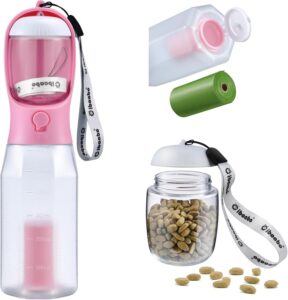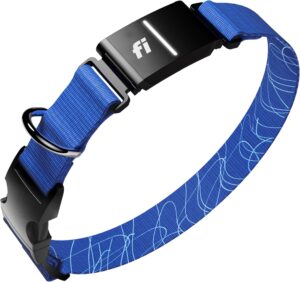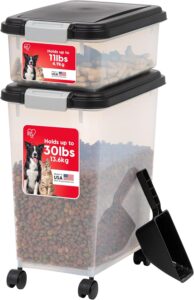
Introduction
Traveling with reptiles can be a rewarding experience, allowing you to share adventures with your scaly companions. However, it requires careful planning and consideration to ensure their safety and comfort. Whether you’re relocating, vacationing, or taking your pet to a show or vet appointment, this guide will provide you with essential tips for a stress-free journey.
Understanding Your Reptile’s Needs
Before embarking on a trip with your reptile, it’s crucial to understand their specific needs. Reptiles are ectothermic animals, meaning they rely on external heat sources to regulate their body temperature. They also require specific environmental conditions, such as humidity and lighting, to thrive. Familiarize yourself with your reptile’s natural habitat and replicate those conditions as closely as possible during travel.
Choosing the Right Travel Container
The first step in preparing for travel is selecting an appropriate container for your reptile. The container should be secure, well-ventilated, and escape-proof. Consider the following options:
Plastic Travel Carriers
Plastic travel carriers are lightweight and durable, making them a popular choice for short trips. Ensure the carrier has plenty of ventilation holes and a secure locking mechanism.
Glass or Acrylic Tanks
For longer journeys, a glass or acrylic tank may be more suitable. These provide better visibility and can accommodate heating elements, but they are heavier and more cumbersome.
Custom Reptile Travel Kits
Some companies offer custom travel kits designed specifically for reptiles, complete with heating pads, thermometers, and humidity gauges. These can be a convenient option for those who travel frequently.
Temperature and Humidity Control
Maintaining proper temperature and humidity levels during travel is crucial for your reptile’s health. Here are some tips to help you achieve this:
Portable Heat Sources
Use heat packs or portable heat lamps to provide warmth during travel. Ensure these heat sources are safely secured and do not come into direct contact with your reptile.
Humidity Maintenance
To maintain humidity, mist the travel container with water as needed. You can also place a damp sponge or paper towel inside the carrier to help retain moisture.
Feeding and Hydration
Proper nutrition and hydration are essential for your reptile’s well-being during travel. Plan ahead to ensure your pet remains healthy and comfortable.
Feeding Schedule
Reptiles have varying dietary needs, so it’s important to adjust their feeding schedule accordingly. If possible, feed your reptile a day or two before travel to reduce the risk of regurgitation.
Providing Water
Ensure your reptile has access to clean water during travel. For short trips, a small water dish may suffice. For longer journeys, consider using a spill-proof water bottle or misting the container regularly.
Ensuring Safety and Security
Keeping your reptile safe and secure during travel is of utmost importance. Here are some steps to take:
Secure the Carrier
Make sure the travel container is securely fastened and placed on a stable surface. Avoid placing it in direct sunlight or near air conditioning vents, as these can affect temperature and humidity levels.
Identification and Documentation
Attach an identification tag to the carrier with your contact information and details about your reptile. It’s also a good idea to carry any necessary documentation, such as permits or health certificates, especially if you’re crossing state or international borders.
Accommodations and Destinations
When planning your trip, consider the accommodations and destinations that will be most suitable for traveling with a reptile.
Choosing Reptile-Friendly Lodgings
Not all hotels or accommodations allow pets, so it’s important to research and confirm that your chosen lodging is reptile-friendly. Call ahead to inquire about any specific policies or fees.
Destination Climate and Environment
Consider the climate and environment of your destination. Ensure that you can replicate your reptile’s habitat conditions or make necessary adjustments to keep them comfortable.
Understanding Travel Regulations
Familiarize yourself with travel regulations regarding reptiles, especially if you are traveling by air or crossing international borders. Different airlines and countries have varying rules and requirements, so it’s important to do your homework.
Airline Policies
Check with your airline about their pet travel policies. Some airlines allow reptiles in the cabin, while others may require them to be transported in the cargo hold. Be prepared to provide necessary documentation and comply with any size or weight restrictions.
International Travel Regulations
If you’re traveling internationally, research the import and export regulations of both your departure and destination countries. This may include obtaining permits, health certificates, and adhering to quarantine requirements.
Preparing for Emergencies
Despite careful planning, emergencies can happen. It’s important to be prepared for any unforeseen circumstances that may arise during your journey.
Emergency Kit
Pack an emergency kit with essential supplies, such as extra food, water, heat packs, and first aid items. Include contact information for a reptile-savvy veterinarian at your destination.
Contingency Plans
Have contingency plans in place in case of travel delays or unexpected changes in itinerary. This may include identifying alternative accommodations or transport options.
Minimizing Stress for Your Reptile
Traveling can be stressful for reptiles, so it’s important to take steps to minimize their anxiety.
Acclimation
Acclimate your reptile to the travel container before the trip. Allow them to spend time in the container at home, so they become familiar with it.
Calm Environment
During travel, keep the environment as calm and quiet as possible. Avoid loud noises, sudden movements, and handling your reptile unnecessarily.
Conclusion
Traveling with reptiles can be a rewarding and enriching experience, but it requires careful preparation and attention to detail. By understanding your reptile’s needs and taking steps to ensure their safety and comfort, you can enjoy a stress-free journey together. Remember to research travel regulations, plan for emergencies, and always prioritize the well-being of your scaly companion. With the right approach, you can embark on exciting adventures with your reptile by your side.
#ChatGPT assisted in the creation of this article.








